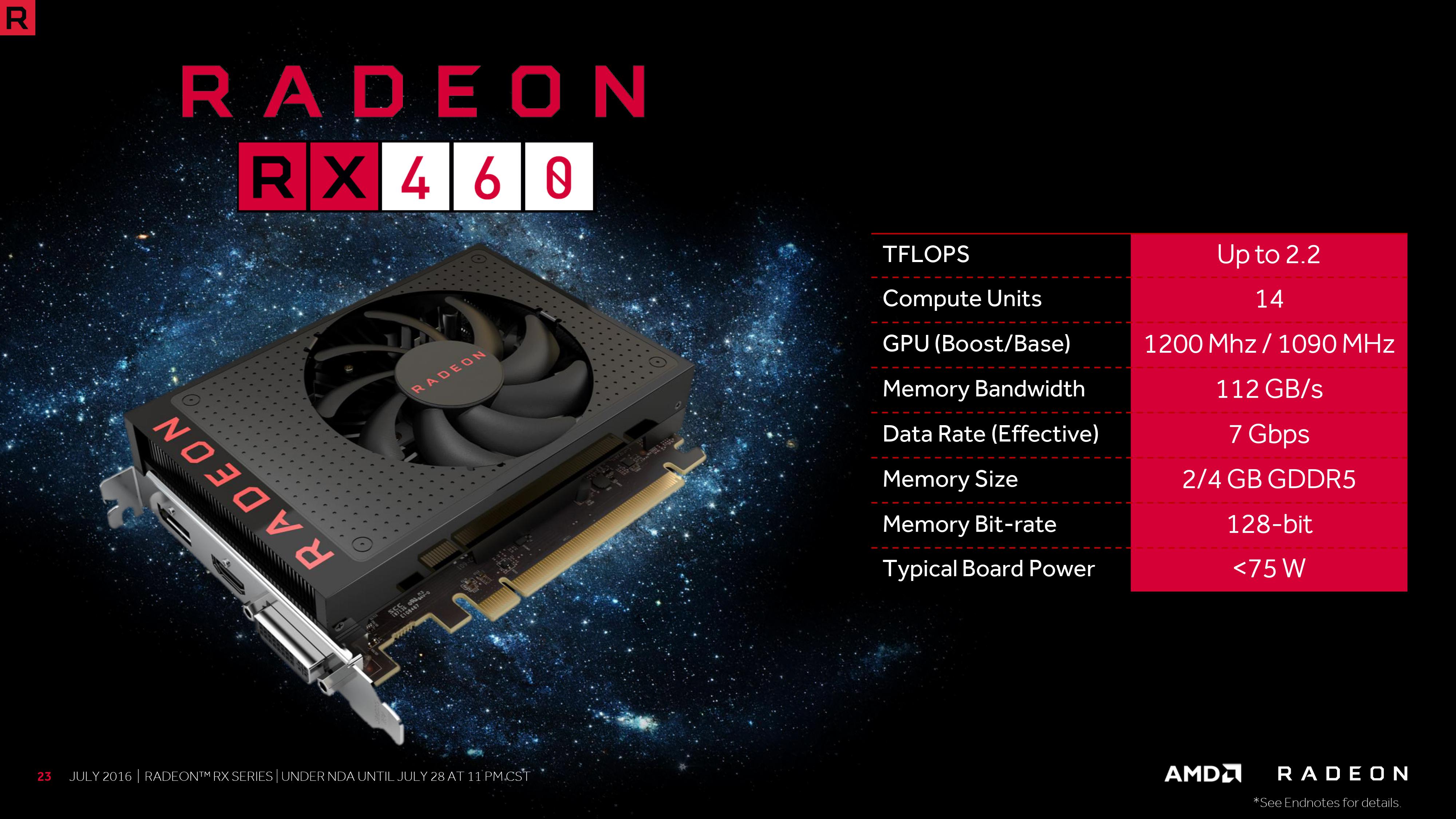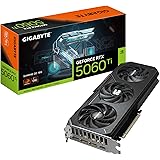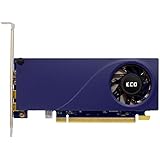The AMD Radeon RX 460, released in 2016, was designed as an entry-level graphics card targeting budget-conscious gamers and casual users. It aimed to provide a compelling balance of price and performance, making it an attractive option for those seeking a discrete graphics solution without a hefty investment. Based on AMD’s Polaris architecture, the RX 460 featured a set of specifications that defined its capabilities and limitations in both gaming and other computationally intensive tasks.

Detailed Specifications
The RX 460 is characterized by specific technical attributes that determine its performance profile. The core clock speeds of 1200 MHz (boost) and 1090 MHz (base) serve as fundamental indicators of the card’s processing power. These clock speeds dictate how rapidly the GPU can execute instructions, impacting the frame rates achievable in games and the speed of various computational tasks.
Peak performance, rated at 2. 2 TFLOPS (trillions of floating-point operations per second), offers a summarized measure of the GPU’s theoretical computational throughput. This figure is crucial for understanding the card’s ability to handle complex calculations, which are essential in modern gaming and certain professional applications.
The architecture of the RX 460 includes 14 Compute Units (CUs), each containing 64 stream processors, totaling 896. These stream processors are the workhorses of the GPU, responsible for executing the parallel computations necessary for rendering graphics and processing data. The quantity and efficiency of these processors significantly influence the card’s overall performance.
Memory specifications also play a critical role. The RX 460 utilizes a 128-bit memory interface coupled with GDDR5 memory. The memory clock speed of 1750 MHz and a memory bandwidth of 112 GB/s determine how quickly the GPU can access and transfer data to and from the memory. Adequate memory bandwidth is essential to prevent bottlenecks, especially at higher resolutions and texture settings.
Cryptocurrency Mining Performance
Beyond gaming, the RX 460 found a niche in cryptocurrency mining, particularly during the cryptocurrency boom of the late 2010s. While not as efficient as higher-end cards, its relatively low power consumption and affordable price made it an attractive option for budget mining rigs. The provided hashrates for various algorithms illustrate its mining capabilities.
For Ethereum mining using the DaggerHashimoto algorithm, the RX 460 achieved a hashrate of approximately 11 MH/s (megahashes per second). With overclocking, this could be pushed to around 13 MH/s. Similarly, for Zcash mining using the Equihash algorithm, the card delivered a hashrate of about 95 sol/s (solutions per second), which could be increased to 115 sol/s with overclocking. Monero mining using the CryptoNight algorithm yielded around 290 H/s (hashes per second), increasing to 325 H/s with overclocking.
These hashrates, while modest compared to high-end GPUs, were sufficient to generate a small profit when cryptocurrency prices were high. The RX 460’s efficiency, measured in terms of hash rate per watt, was a key factor in its popularity among miners looking to minimize electricity costs.
Overclocking Potential and Power Consumption
The RX 460 offered some headroom for overclocking, allowing users to squeeze additional performance out of the card. Overclocking involved increasing the core and memory clock speeds beyond their default settings. The provided settings (Voltage: -60, Core: 1150, Memory: 1850) represent typical overclocking parameters that users could apply to their RX 460 cards.
However, overclocking came with trade-offs. Increased clock speeds led to higher power consumption and heat generation. The stock RX 460 consumed around 75 watts, making it relatively efficient. Overclocking could push this figure higher, requiring better cooling solutions to prevent overheating and instability.
The power consumption of the RX 460 was a significant advantage in the budget segment. Its low power draw meant that it could be paired with less expensive power supplies and still operate efficiently. This was particularly appealing to users building budget gaming PCs or mining rigs on a tight budget.
Impact and Market Position
The RX 460 played a significant role in the budget graphics card market. It provided a viable option for gamers who could not afford higher-end cards but still wanted a discrete GPU for improved performance over integrated graphics solutions. Its affordability and reasonable performance made it a popular choice for entry-level gaming PCs.
The card’s impact extended beyond gaming, as it found utility in cryptocurrency mining and other computationally intensive tasks. Its efficiency and cost-effectiveness made it a valuable tool for miners looking to maximize their returns. The RX 460 also served as a stepping stone for users looking to upgrade to more powerful graphics cards in the future.
Influential Factors and Developments
Several factors influenced the RX 460’s market position and its relevance over time. The release of newer graphics cards from both AMD and Nvidia gradually diminished its appeal. As newer cards offered better performance at similar or lower price points, the RX 460 became less competitive.
Software updates and driver optimizations from AMD played a crucial role in maintaining the RX 460’s performance. Regular driver updates often included performance improvements and bug fixes that enhanced the card’s capabilities in newer games and applications.
The rise and fall of cryptocurrency prices also impacted the demand for the RX 460. During periods of high cryptocurrency prices, demand for the card increased, driving up its price and making it more difficult to find in stock. Conversely, when cryptocurrency prices declined, demand decreased, and the card became more readily available at lower prices.
Comparison with Competitors
When comparing the RX 460 to its competitors, such as the Nvidia GeForce GTX 1050, several key differences emerge. The GTX 1050 generally offered slightly better gaming performance at a similar price point. However, the RX 460 had its advantages, particularly in certain DirectX 12 titles, where AMD cards often performed better due to their architecture.
The choice between the RX 460 and the GTX 1050 often came down to specific game preferences and individual user needs. Some users preferred the Nvidia card for its slightly better overall performance, while others favored the AMD card for its advantages in certain games and its more open-source friendly drivers.
Future Developments
Looking ahead, the RX 460 is gradually becoming obsolete as newer graphics cards offer significantly better performance at similar or lower prices. However, it may still find use in older systems or as a backup card for troubleshooting purposes.
The legacy of the RX 460 lies in its contribution to the budget graphics card market. It demonstrated that affordable graphics cards could provide a viable gaming experience and contribute to other computationally intensive tasks. Its impact on the market helped shape the development of future budget-oriented graphics cards.
The AMD Radeon RX 460 was a notable entry-level graphics card that struck a balance between price and performance. Its specifications, including clock speeds, compute units, and memory bandwidth, defined its capabilities in gaming and cryptocurrency mining. Its impact on the market was significant, particularly in the budget segment, where it provided an affordable option for gamers and miners alike. While its relevance has diminished with the release of newer cards, the RX 460 remains a significant chapter in the history of budget graphics cards, demonstrating the potential of affordable GPUs in various applications.
Performance Considerations in 2025
Fast forward to 2025, and the RX 460 faces an entirely different landscape. Modern games are far more demanding. They feature advanced graphical effects and higher resolution textures. The RX 460’s limited VRAM and processing power make it inadequate for playing most new AAA titles at acceptable settings.
While it might struggle with modern games, the RX 460 could still be viable for older titles and esports games that have not received significant graphical updates. Games like “League of Legends,” “CS:GO,” and “Rocket League” could still run smoothly at 1080p with medium to low settings. However, even in these scenarios, newer integrated graphics solutions found in modern CPUs might offer comparable or even better performance.
One of the critical limitations of the RX 460 in 2025 is its lack of support for the latest graphical technologies. Features like ray tracing and DLSS, which are becoming increasingly prevalent in modern games, are not supported by the RX 460. This lack of support further diminishes its appeal for gamers looking to experience the latest visual advancements.
The RX 460’s viability for cryptocurrency mining in 2025 is also limited. While it was once used for mining Ethereum and other cryptocurrencies, its low hash rate and limited VRAM make it inefficient compared to modern GPUs. Mining Ethereum, which was once a popular application for GPUs like the RX 460, is no longer possible due to the shift to a Proof-of-Stake consensus mechanism.
Even for other cryptocurrencies that can still be mined with GPUs, the RX 460’s performance is underwhelming. Its low hash rate means that it would generate very little revenue, while its power consumption would result in high electricity costs. The combination of low returns and high expenses makes the RX 460 an unattractive option for cryptocurrency mining in 2025.
However, there might be niche scenarios where the RX 460 could still be used for mining. For example, if electricity costs are exceptionally low or if the card is used for mining less popular cryptocurrencies with algorithms that are not memory-intensive, it might still generate a small profit. But these scenarios are highly specific and unlikely to be relevant for most users.
Scenarios Where Purchasing an RX 460 Might Make Sense
- Very Low Cost: If you can acquire an RX 460 for a very low price, such as through a used hardware marketplace, it might be a cheap way to add basic graphical capabilities to an older PC. This could be useful for tasks like light gaming, video playback, or general productivity.
- Low Electricity Costs: In regions with exceptionally low electricity prices, the RX 460 could be used for mining less demanding cryptocurrencies without incurring significant expenses. However, it is essential to carefully evaluate the potential profitability before investing in an RX 460 for mining purposes.
- Secondary or Experimental Rig: The RX 460 could be used as a secondary GPU in an experimental rig. This could be useful for learning about GPU architecture, testing different mining algorithms, or as a backup in case your primary GPU fails.
- Gaming at Low Settings or Older Titles: If your gaming needs are limited to older titles or esports games that can run smoothly at low settings, the RX 460 could still provide a playable experience. However, it is important to temper expectations and understand that it will not be able to handle modern AAA games.
Scenarios Where Purchasing an RX 460 Is Not Worth It
In most cases, purchasing an RX 460 in 2025 is not a worthwhile investment. Here are some scenarios where it is best to avoid this GPU:
- Mining Ethereum or Memory-Intensive Coins: The RX 460’s limited VRAM makes it unsuitable for mining Ethereum or other cryptocurrencies with memory-intensive algorithms. Its hash rate would be too low to generate meaningful returns.
- Moderate to High Electricity Costs: If you live in an area with moderate to high electricity costs, the RX 460’s low hash rate and relatively high-power consumption would make it unprofitable for mining.
- Comparison to Newer GPUs: When compared to newer GPUs, the RX 460’s efficiency (hash rate per watt or performance per watt) is significantly worse. Newer GPUs offer much better performance and lower power consumption, making them a more cost-effective choice.
- Long-Term Mining: Purchasing an RX 460 for long-term mining is risky due to the potential for hardware failure, lower resale value, and the constantly evolving landscape of cryptocurrency mining.
In conclusion, the AMD Radeon RX 460, while a decent budget option in 2016, holds limited value in 2025. Its outdated architecture, low VRAM, and lack of support for modern technologies make it unsuitable for most modern gaming and cryptocurrency mining applications. While there are a few niche scenarios where purchasing an RX 460 might make sense, such as for very low-cost secondary systems or for experimentation, in most cases, it is best to consider alternative options like integrated graphics or used newer GPUs. The evolving landscape of technology demands more efficient and powerful solutions, rendering the RX 460 largely obsolete for modern computing needs.
Summary of the AMD Radeon RX 460 Specifications :
- CLOCK SPEEDS : 1200 / 1090 MHz ( Boost / Base )
- PEAK PERFORMANCE : 2.2 TFLOPS
- COMPUTE UNITS : 14 CUs
- STREAM PROCESSORS : 896
- MEMORY INTERFACE : 128 bit
- MEMORY TYPE : GDDR5
- MEMORY CLOCK SPEED : 1750 MHZ
- MEMORY BANDWIDTH : 112 GB/s

- Ethereum Mining Hashrate : 11 MH/s
OverClocking Hashrate : 13 MH/s
- Zcash Mining Hashrate : 95 sol/s
OverClocking Hashrate : 115 sol/s
- Monero Mining Hashrate : 290 H/S
OverClocking Hashrate : 325 H/S
Summary of the AMD Radeon RX Mining Hashrate
- DaggerHashimoto [ EtHash : (ETH) & (ETC) ] Mining Hashrate : 10.65 MH/s
- Cryptonight [ (XMR) & (XDN) ] Mining Hashrate : 0.33 kH/s
- CryptoNightV7 Mining Hashrate : 0.286 KH/s
- Equihash [ (ZEC – ZEN – ZCL) & (BTG) & (KMD) & (HUSH) ] Mining Hashrate : 110 Sol/s
- Pascal [ (PASC) & (PASL) ] Mining Hashrate : 0.3 GH/s
- X11GOST [ Sibcoin (SIB) ] Mining Hashrate : 2.8 GH/s
RX 460 OverClocking Settings :
- Voltage : -60
- Core : 1150
- Memory : 1850
Power Consumption : 75 Watt/Per Hour




